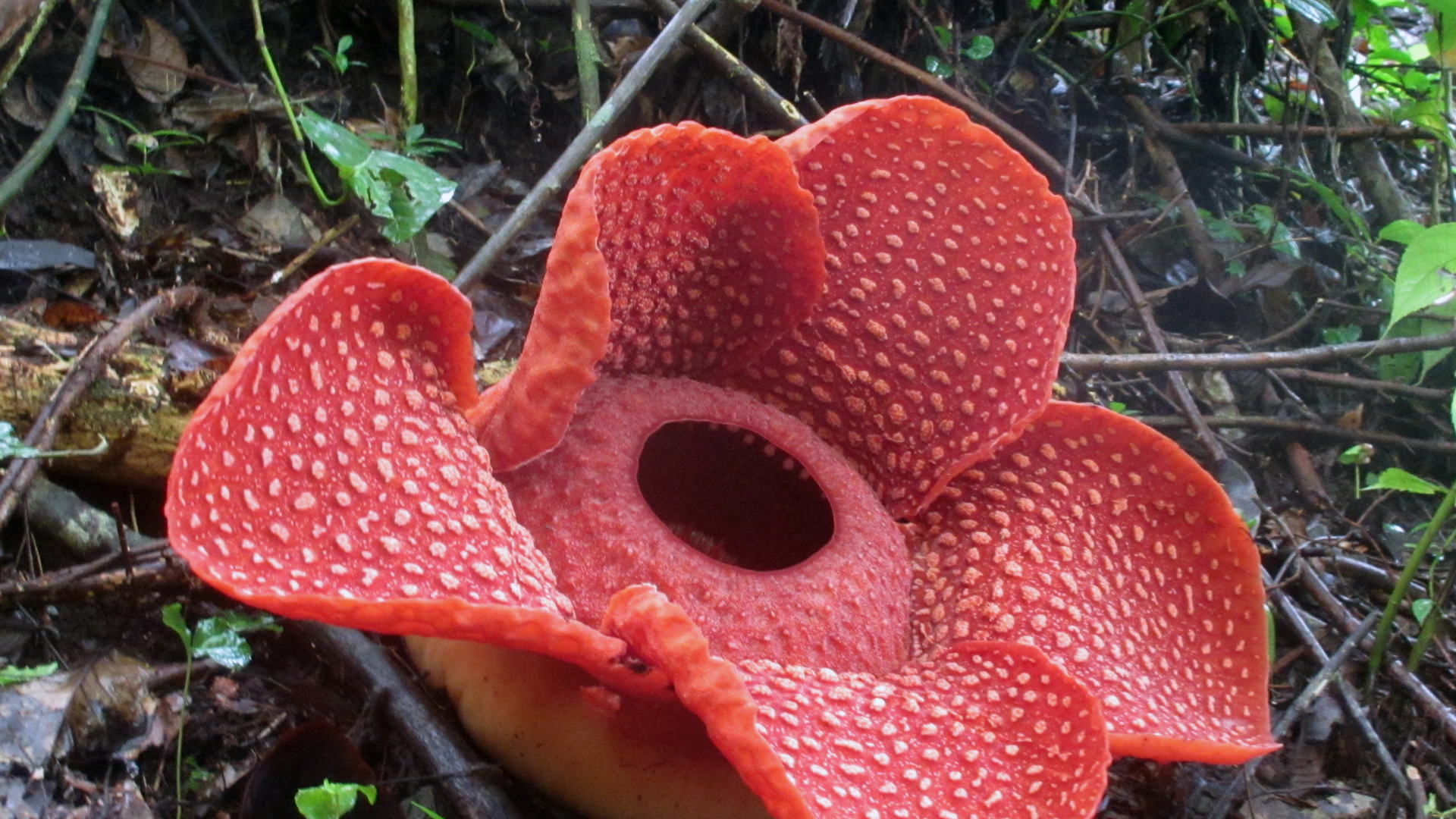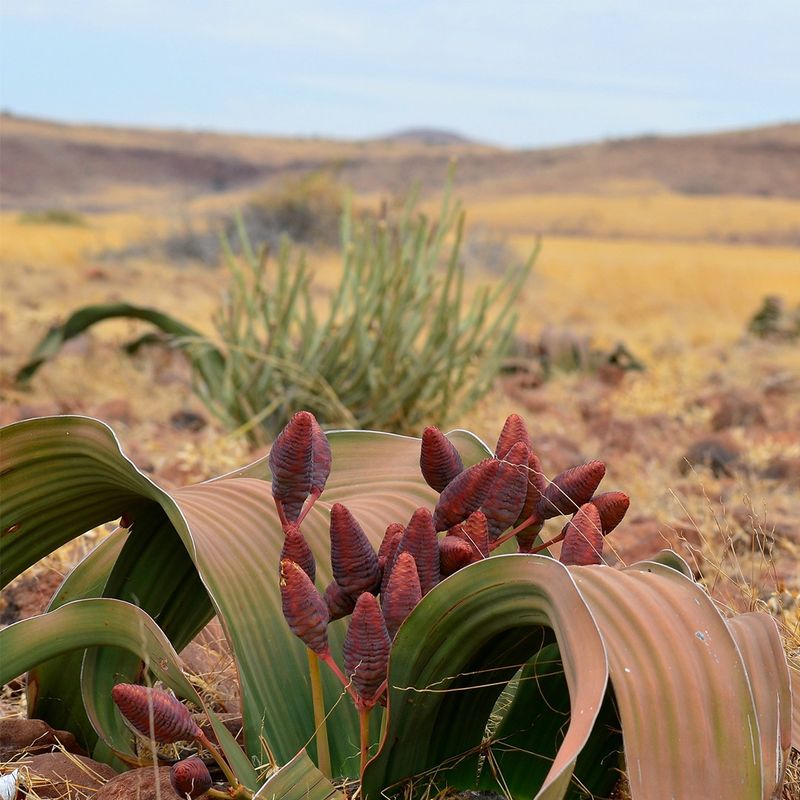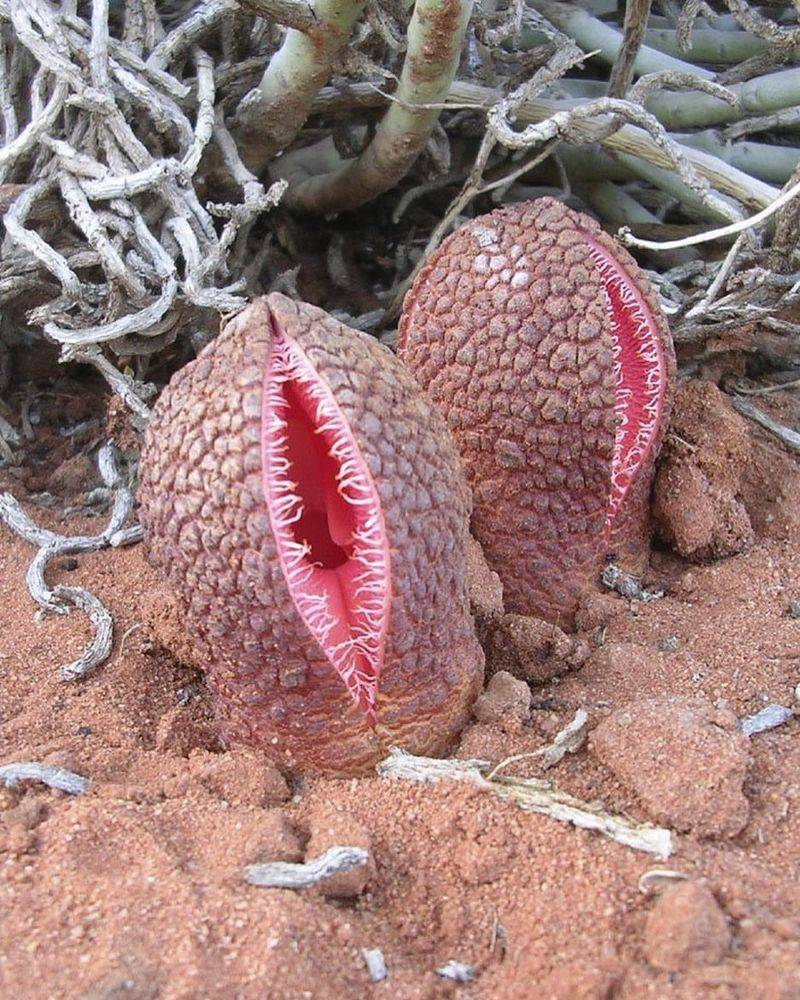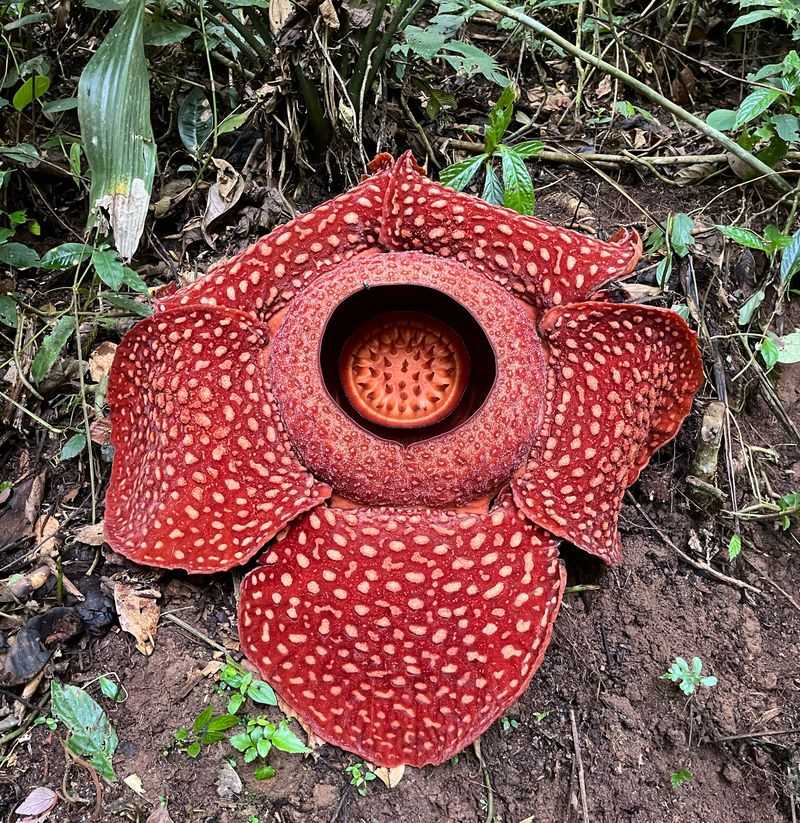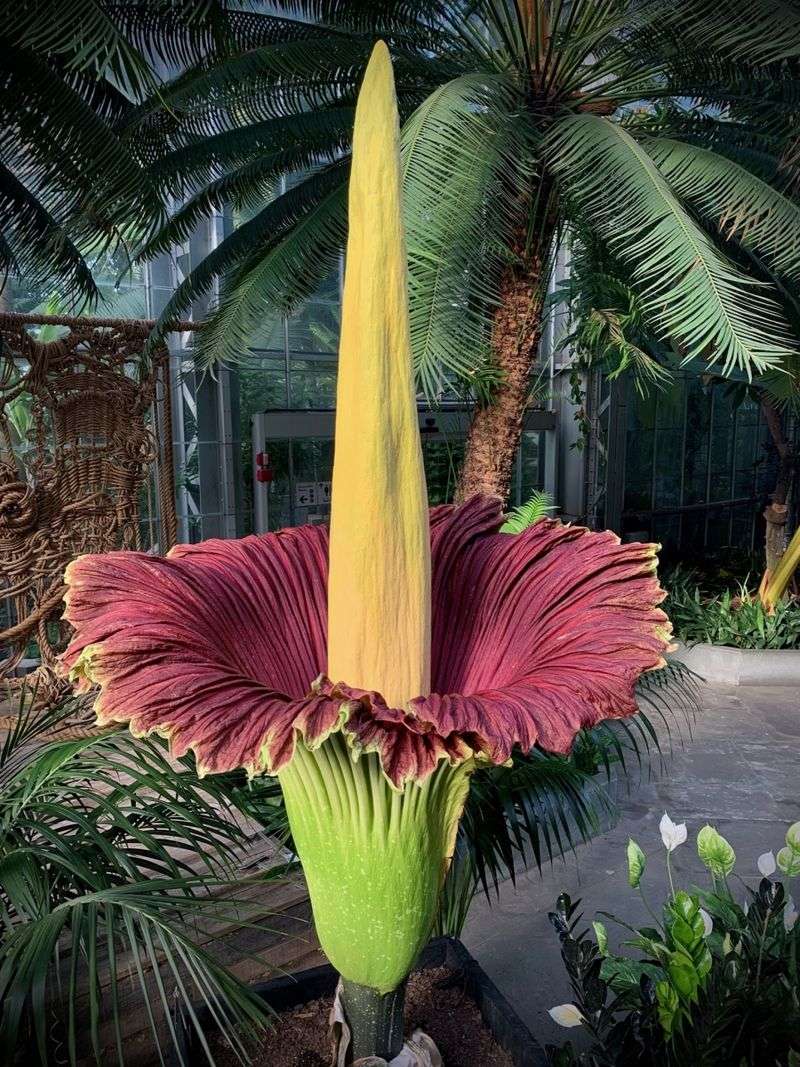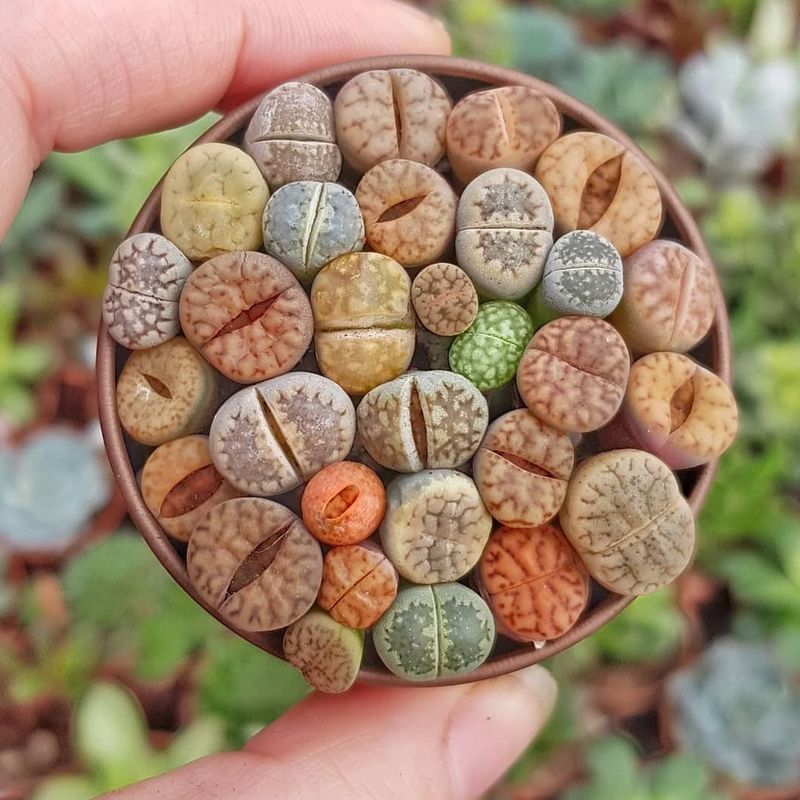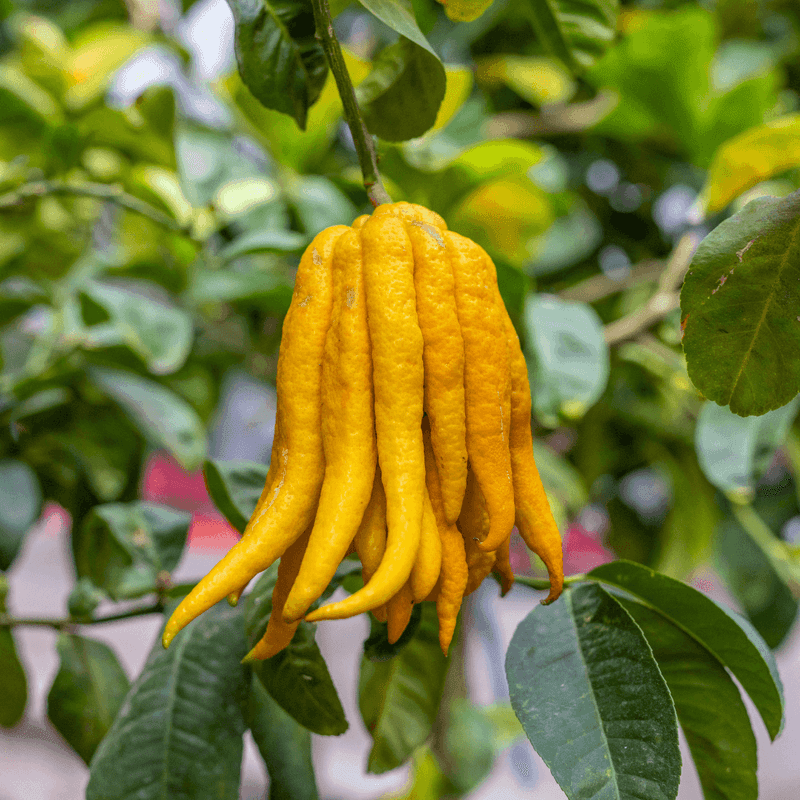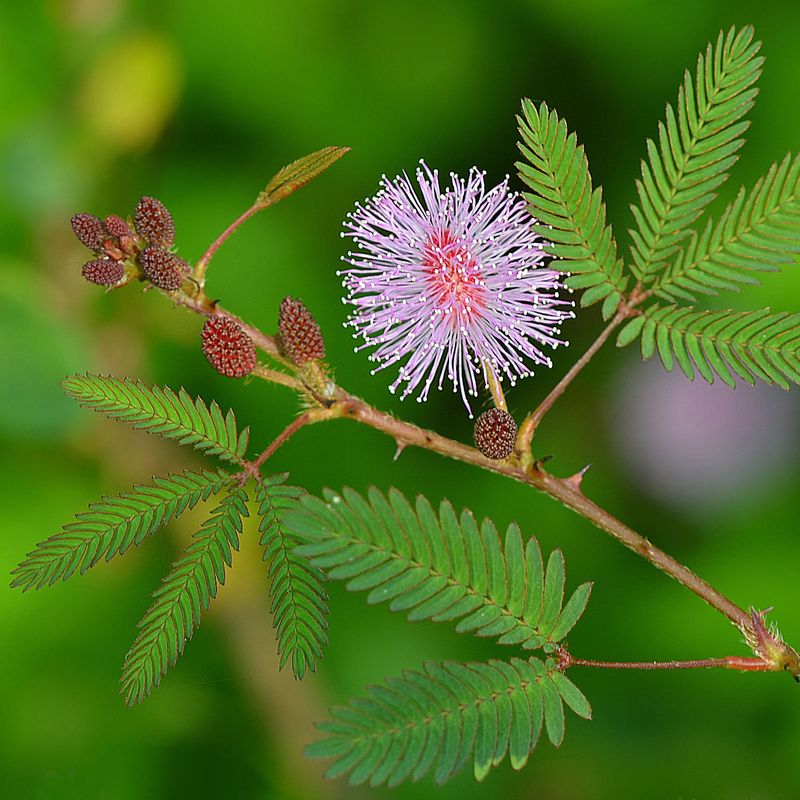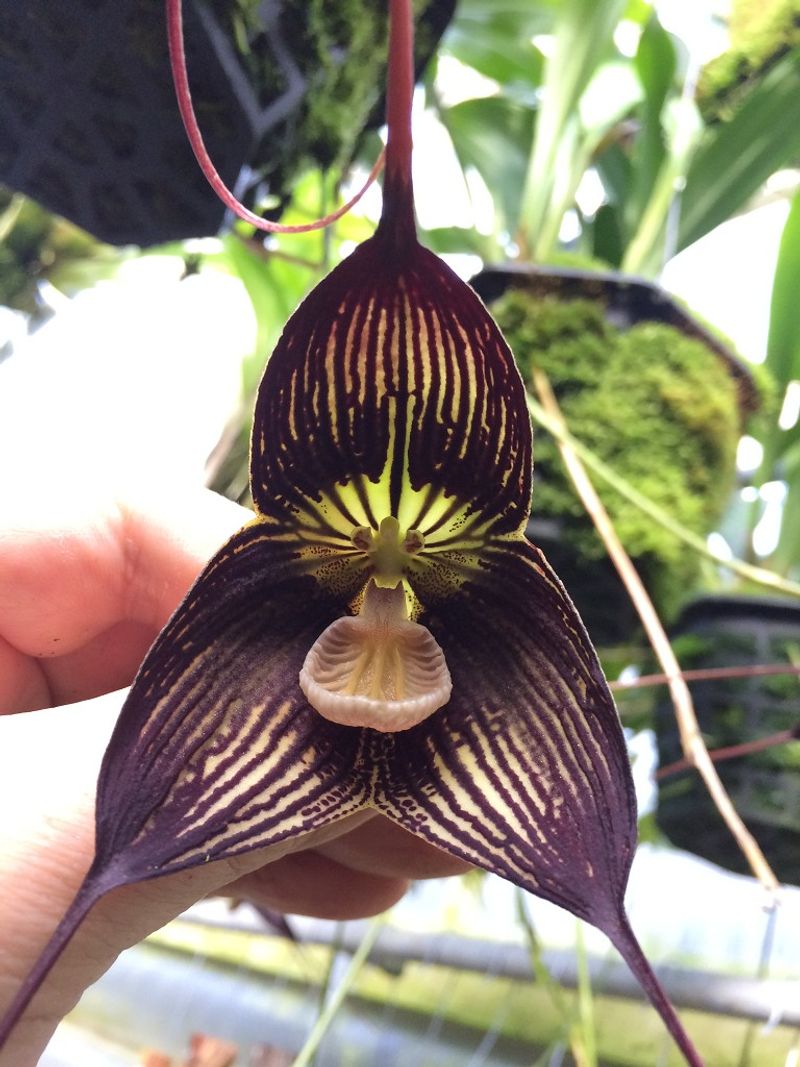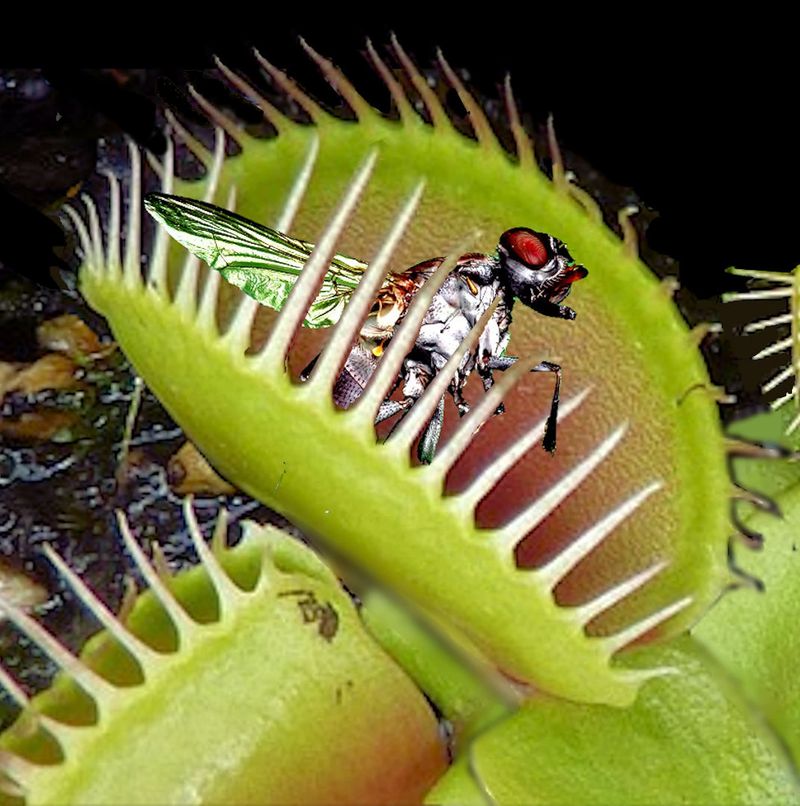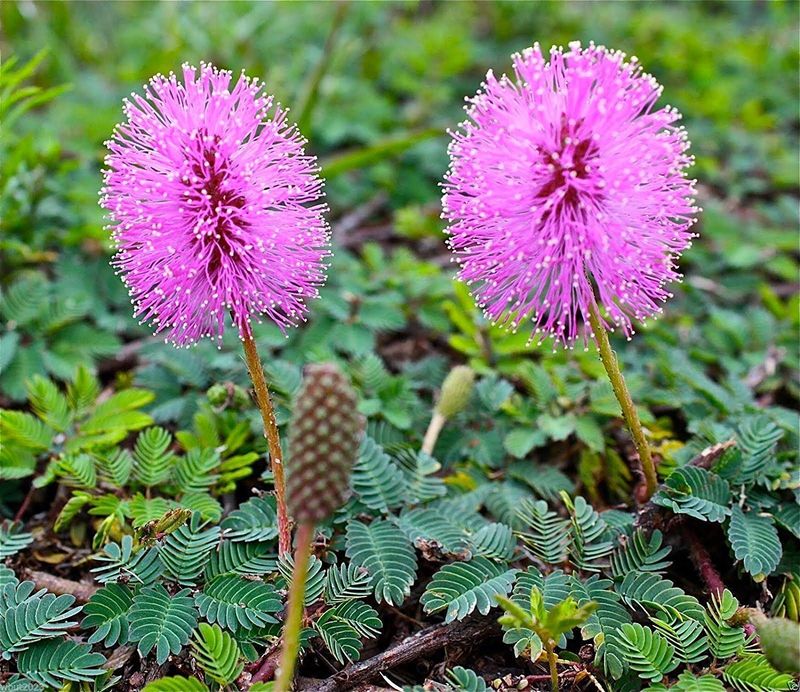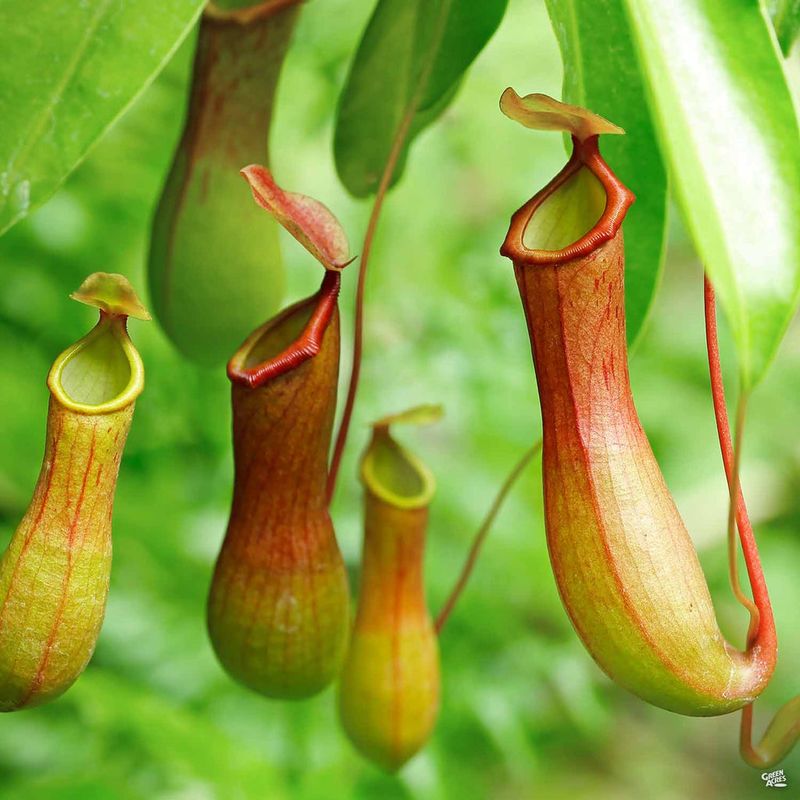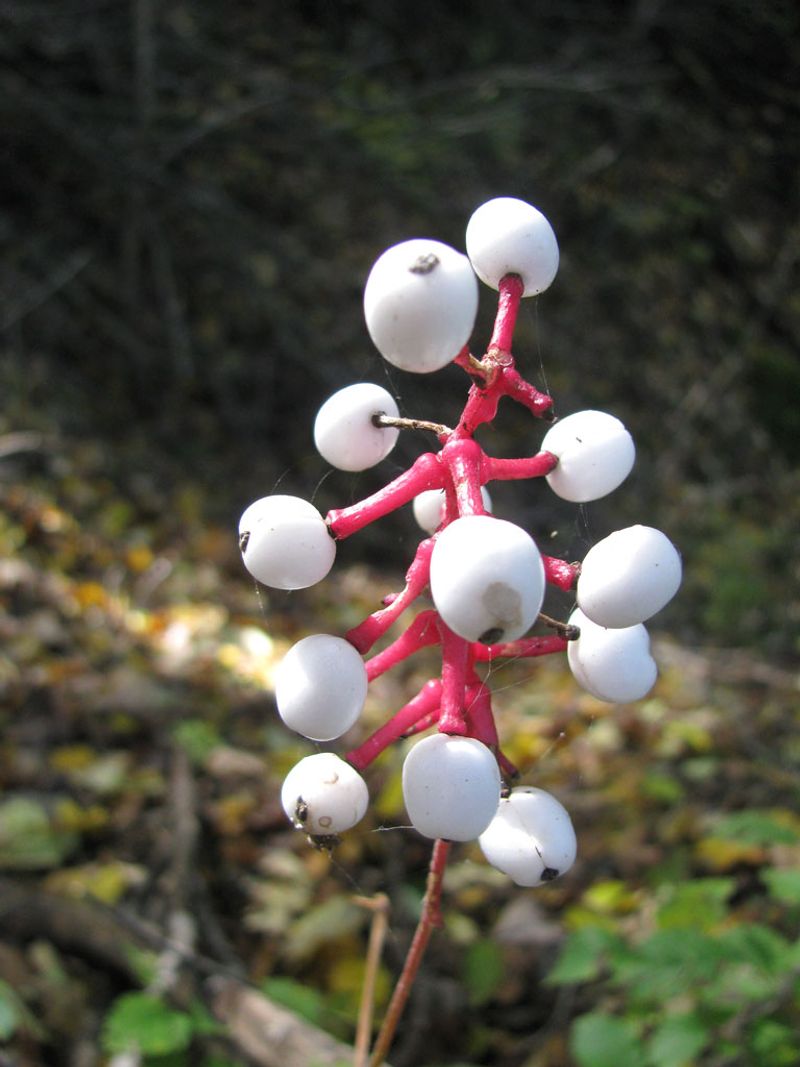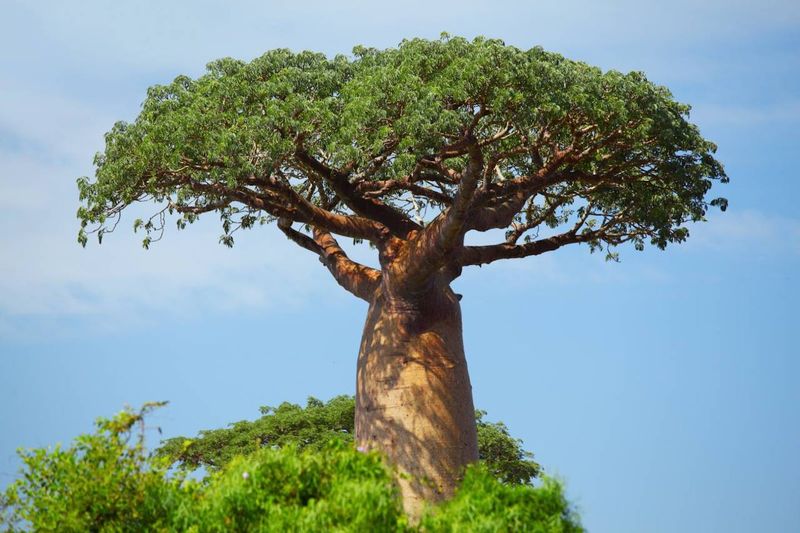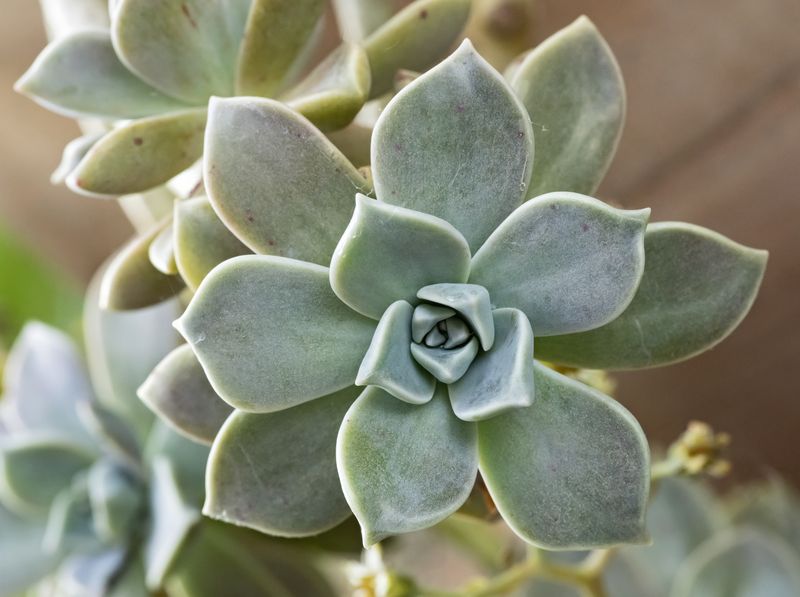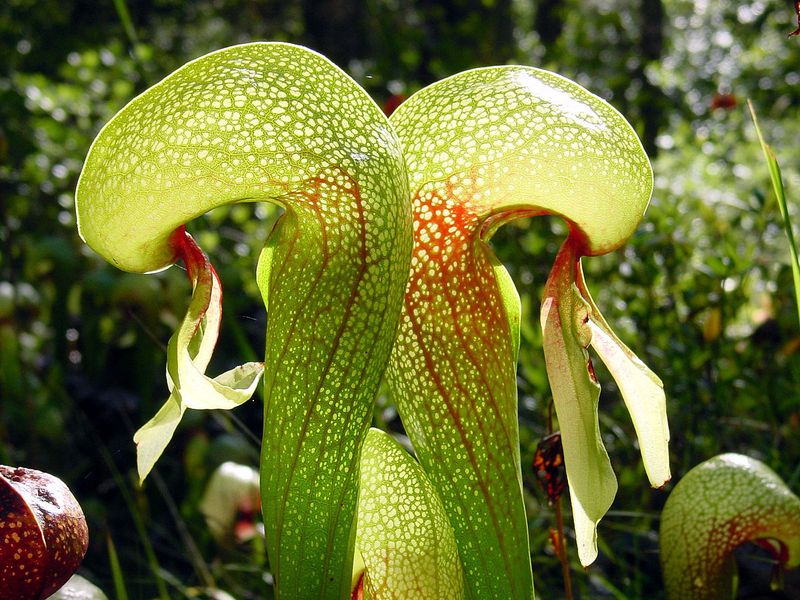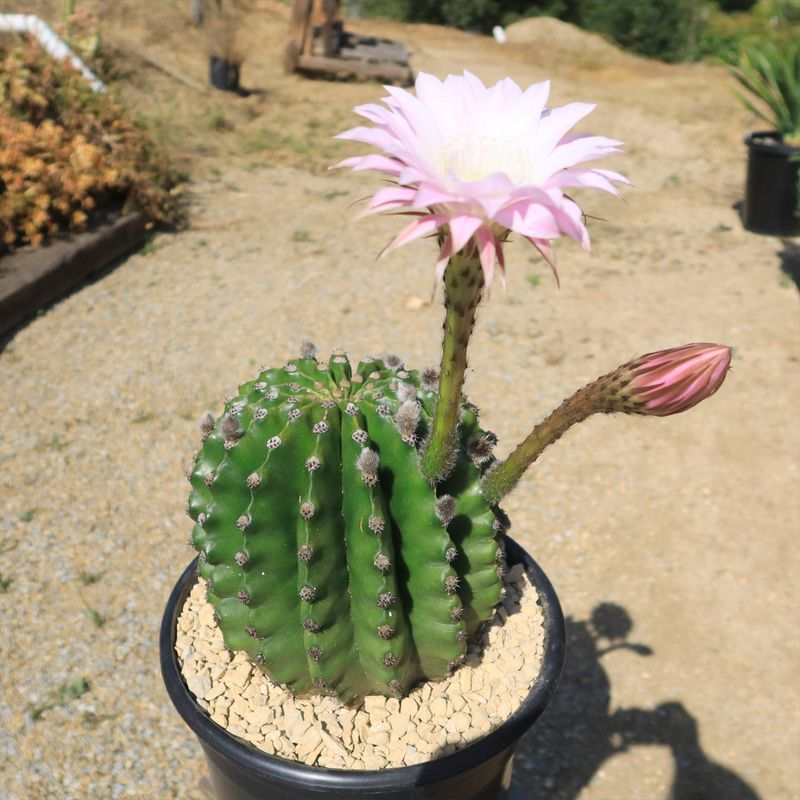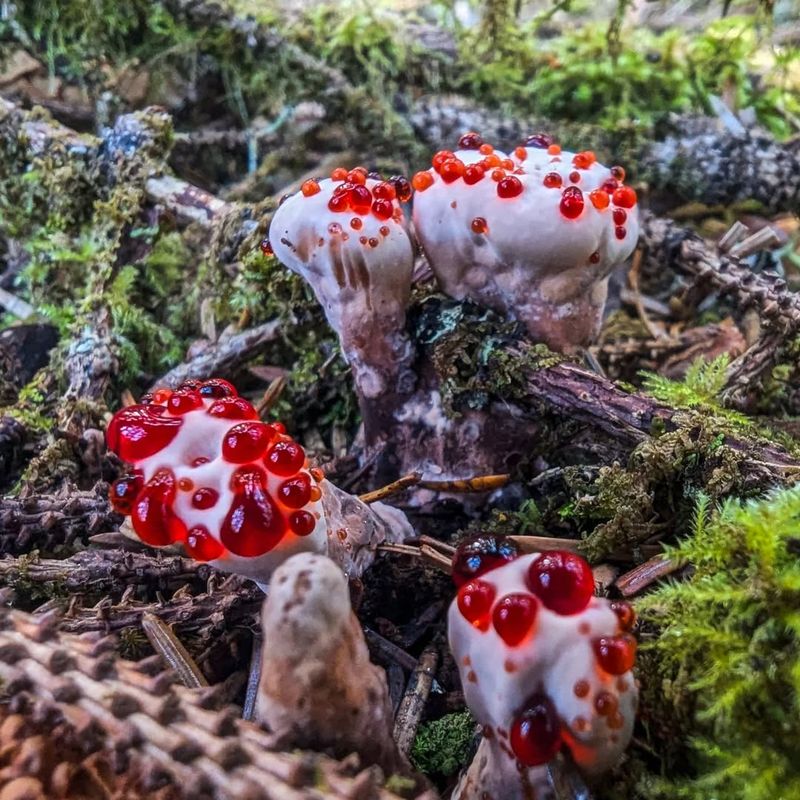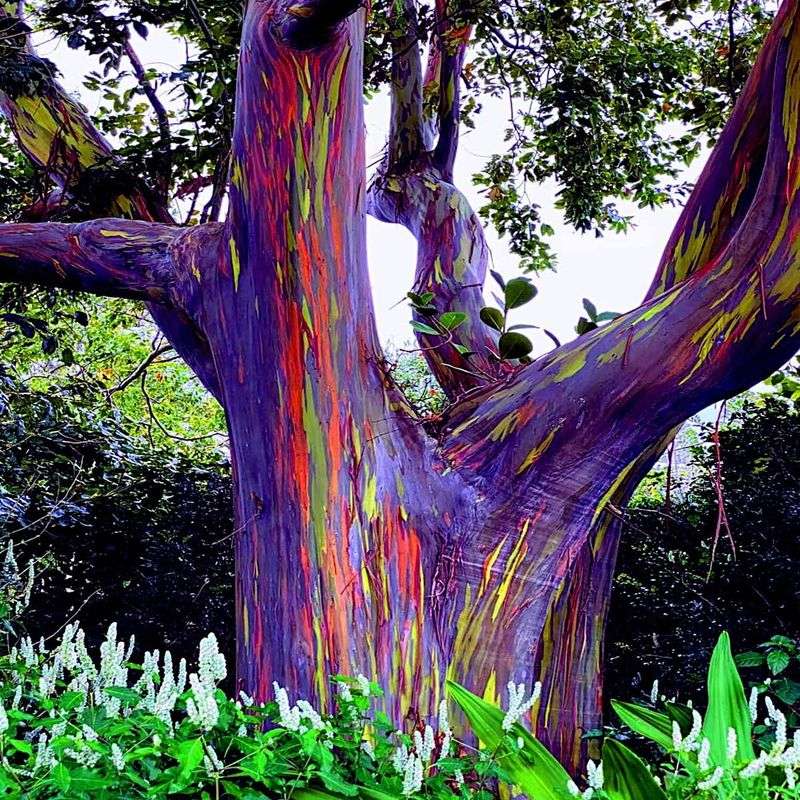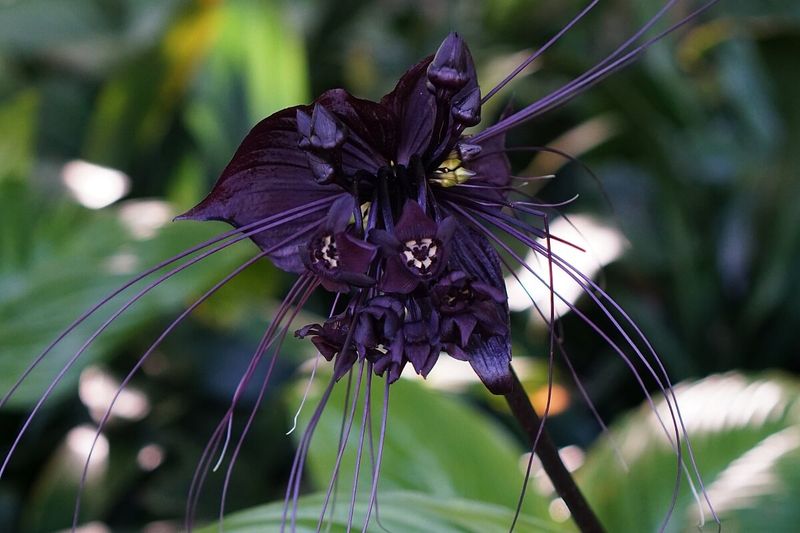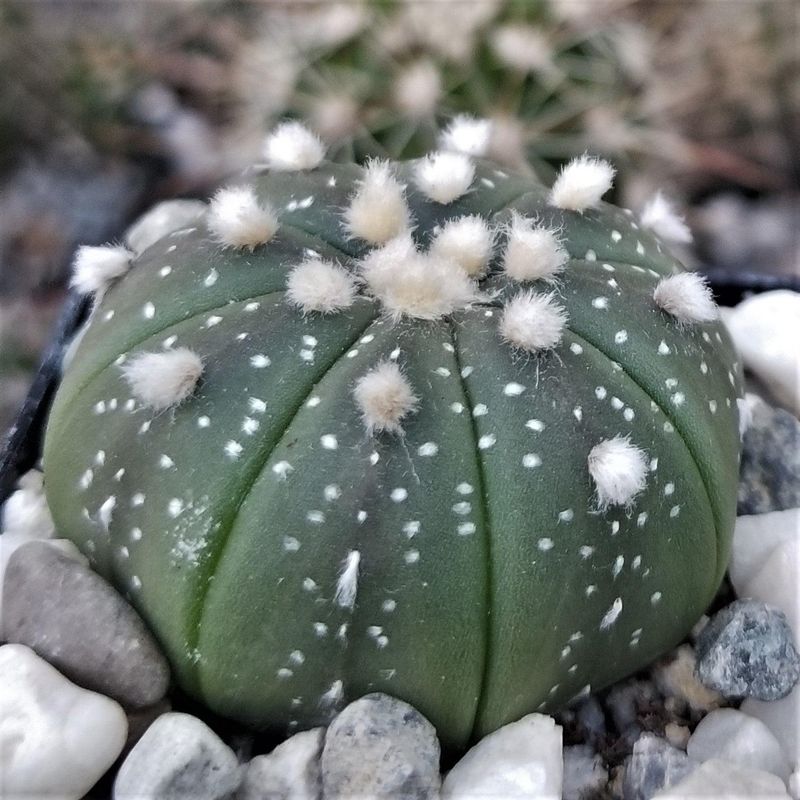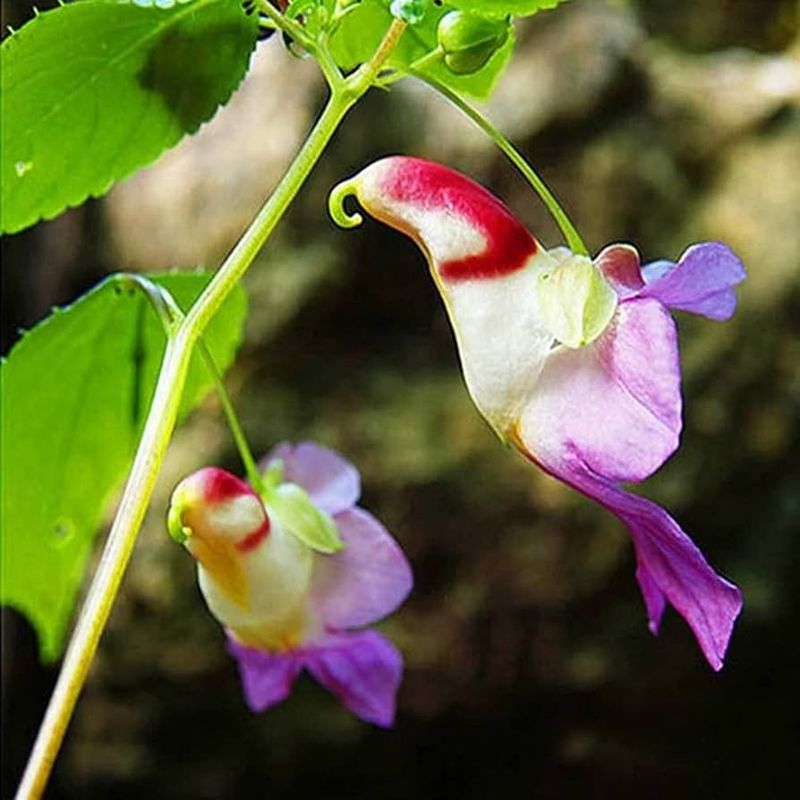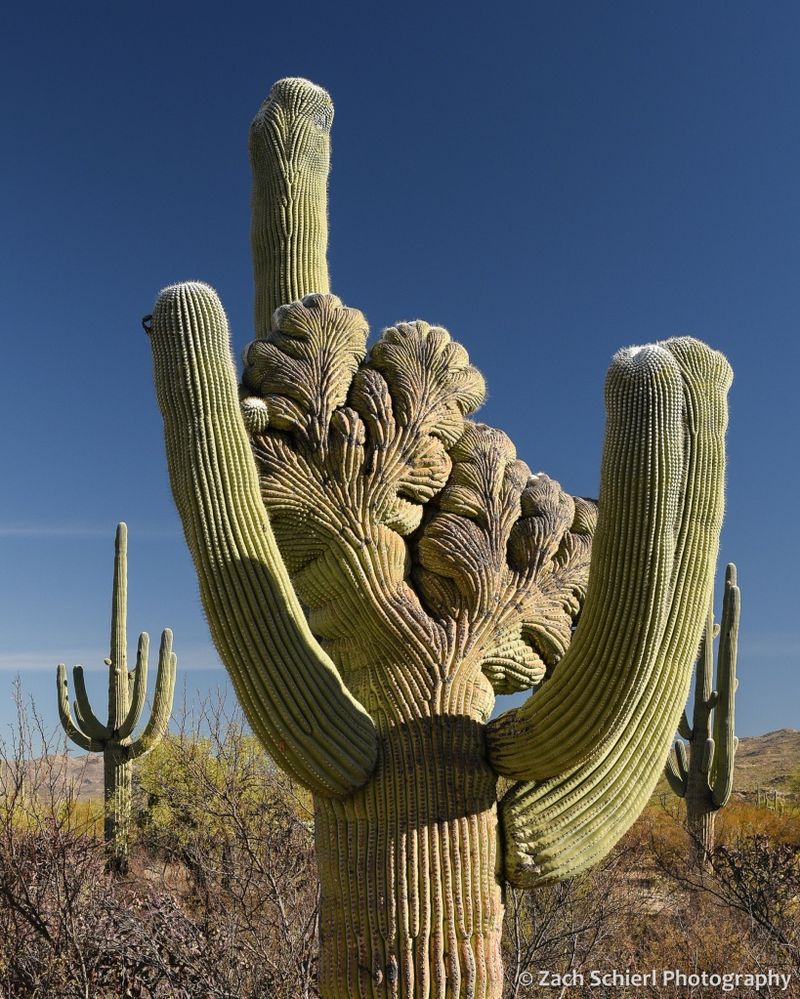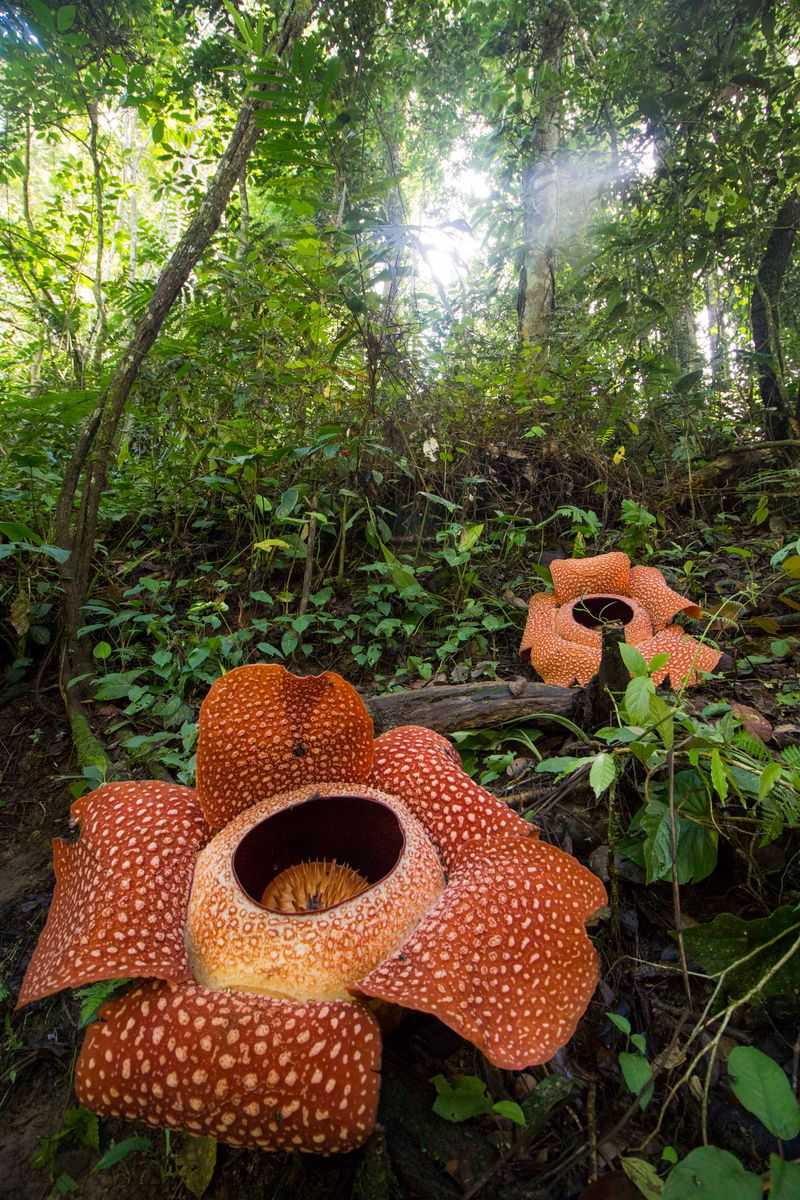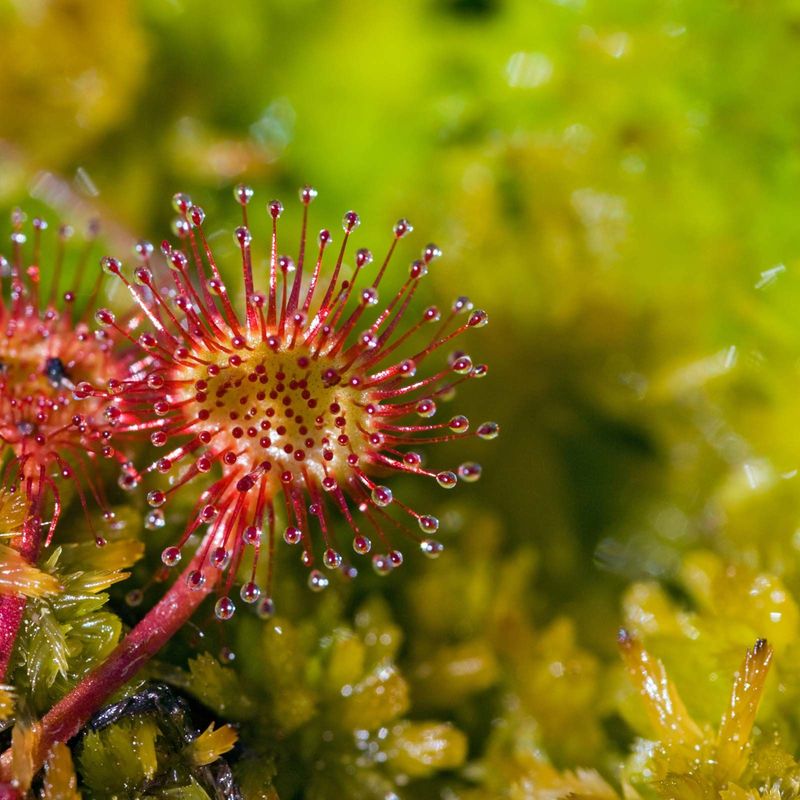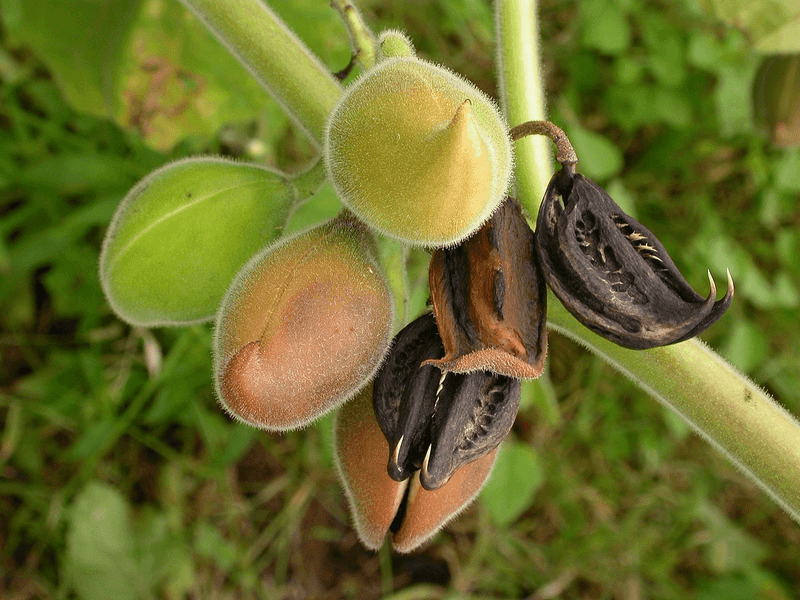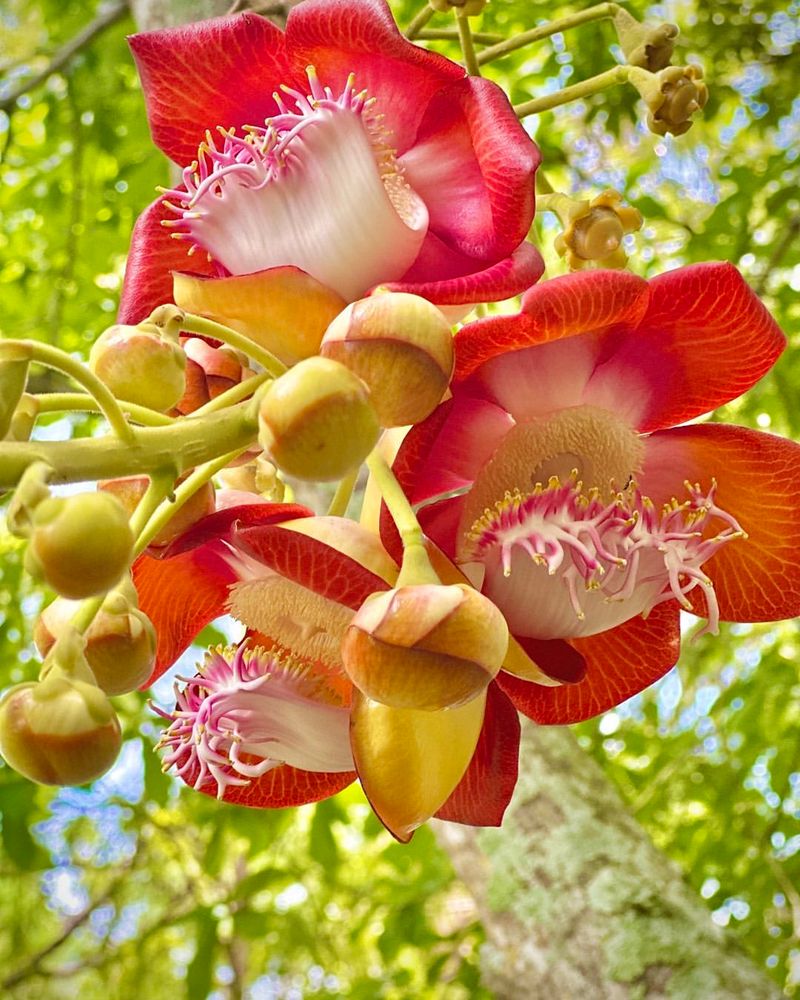Have you ever come across a plant so bizarre that it made you question nature’s blueprint? I often find myself marveling at these oddities, wondering if Mother Nature was feeling extra creative that day.
From flowers that look like something out of a sci-fi movie to plants that seem to defy all logic, there’s no shortage of peculiar wonders in the plant world.
I once saw a plant that looked like it had little alien arms waving at me. Definitely not your typical garden fare!
1. Welwitschia Mirabilis
Imagine a plant that looks like it’s forgotten how to stop growing. The Welwitschia Mirabilis is native to the Namib Desert and has only two leaves that continuously grow throughout its life.
This desert dweller defies aging, living for up to 2,000 years. Its leaves twist and tangle over time, resembling a botanical tumbleweed.
Despite the harsh desert climate, this plant thrives, surviving on minimal moisture. It’s a botanical marvel that turns the concept of aging on its head, all while basking under the relentless desert sun.
2. Hydnora Africana
Peek beneath the surface and you’ll find a plant that looks like it belongs in a sci-fi movie. The Hydnora Africana is a parasitic plant that spends most of its life underground.
When it does emerge, its flower resembles an alien creature. This root-like plant has no chlorophyll and relies on its host for sustenance.
Its captivatingly bizarre flower emits a pungent odor, attracting pollinating insects. It’s a perfect example of nature’s quirky ingenuity, thriving in the dry regions of southern Africa with its unconventional lifestyle.
3. Rafflesia Arnoldii
In the lush rainforests of Southeast Asia, a flower blooms that could easily be mistaken for a mythical beast. The Rafflesia Arnoldii holds the title of the world’s largest flower, with some specimens spanning over three feet across.
Its massive petals emit an odor reminiscent of rotting meat. This peculiar scent attracts carrion flies for pollination.
Despite its daunting size and smell, it’s a fascinating plant that challenges our perceptions of floral beauty. It’s as if nature decided to create a flower with an attitude, one that doesn’t care about fitting in.
4. Titan Arum
Standing tall and proud, this plant commands attention with its grand stature. The Titan Arum, or corpse flower, is famous for its impressive height and pungent smell.
Native to Sumatra’s rainforests, it can grow over ten feet and emits an odor similar to decaying flesh. This scent attracts pollinators like beetles and flies.
It’s a rare spectacle in botanic gardens worldwide. The Titan Arum’s bloom is a brief affair, lasting just a few days, making its appearance both a celebrated and fleeting marvel of the botanical world.
5. Lithops
What looks like a collection of colorful pebbles is actually a clever disguise. Lithops, native to the arid regions of southern Africa, are succulents that mimic stones to avoid being eaten.
These living stones have evolved to blend seamlessly with their rocky surroundings. Their unique appearance and minimal water needs make them popular among plant enthusiasts.
Each stone splits open to reveal a beautiful flower, a hidden gem in the plant world. Despite their stony exterior, Lithops are a testament to nature’s ingenuity in camouflage.
6. Buddha’s Hand
A fruit that resembles a gnarled hand, it’s hard to ignore the Buddha’s Hand when you first see it. This citrus fruit, with its finger-like segments, is as intriguing as it is aromatic.
Used in perfumes, it lacks the juicy pulp typical of its citrus cousins. Despite this, its zest is highly prized in culinary circles. Originating from Asia, it’s a symbol of luck and prosperity.
The Buddha’s Hand is a delightful example of how nature’s quirks can be both strange and spectacular, making it a conversation starter at any gathering.
7. Mimosa Pudica
Touch it, and you’ll see nature’s defense mechanism in action. Mimosa Pudica, also known as the sensitive plant, responds to touch by folding its leaves.
This rapid movement is a survival strategy to deter herbivores. Native to South and Central America, it’s often grown for its novelty. Children and adults alike find joy in its interactive nature.
Its delicate leaves and pink flowers are visually pleasing, but it’s the plant’s responsiveness that truly captivates. Mimosa Pudica is a living reminder of the subtle defense mechanisms plants employ to survive.
8. Dracula Orchid
In the shadowy cloud forests of Ecuador, a flower awaits that could be mistaken for a vampire. The Dracula Orchid, with its bat-like appearance, is both eerie and enchanting.
Its dark petals and dramatic shapes give it an otherworldly charm. Despite its name, it’s not as sinister as it sounds. The flowers emit a fruity scent to attract fruit flies for pollination.
This plant is a testament to nature’s flair for the dramatic, showcasing beauty in the most unexpected forms. The Dracula Orchid is a captivating gothic spectacle of the plant world.
9. Venus Flytrap
Sneak in too close, and you might witness one of nature’s most fascinating traps in action. The Venus Flytrap lures unsuspecting insects with its sweet nectar before snapping shut with incredible speed.
Native to the wetlands of the Carolinas, it’s a carnivorous wonder. Its modified leaves act as jaws, digesting prey for nutrients. While it may sound sinister, the Venus Flytrap is a marvel of evolutionary adaptation.
Its precision and speed in capturing prey make it a botanical version of a skilled hunter, fascinating botanists and curious minds alike.
10. Sensitive Plant
In the tropical realms, a plant exists that’s as shy as it is intriguing. The Sensitive Plant, or Mimosa Pudica, is renowned for its quick response to touch.
When stroked, its leaves fold inward as if bashful. This defense mechanism wards off predators, ensuring its survival. The plant’s delicate pink blossoms add to its allure, making it a popular choice among gardeners.
It’s a living testament to the subtle interactions within the plant kingdom. The Sensitive Plant’s touch-me-not behavior is a delightful quirk that never fails to amuse.
11. Pitcher Plant
In the murky swamps and rainforests, there’s a plant that sets the perfect trap. The Pitcher Plant, with its tubular leaves, lures insects into its depths with sweet nectar.
Inside, a pool of water and digestive enzymes awaits, breaking down prey for nutrients. This carnivorous plant thrives in nutrient-poor soils where others struggle.
Its deep colors and unique shape make it both a predator and a plant of beauty. The Pitcher Plant’s cunning mechanism is nature’s version of an elaborate ruse, one that’s as deadly as it is ingenious.
12. Doll’s Eyes
If you ever wander into the forests of eastern North America, you might stumble upon a plant that sends shivers down your spine. Known as Doll’s Eyes, this plant bears berries that eerily resemble eyeballs.
These ghostly white berries sit atop red stems, creating a stark contrast. While visually intriguing, they are highly toxic and should be admired from a distance.
This plant’s haunting appearance masks its deadly nature. Doll’s Eyes are a spooky reminder of nature’s myriad designs, where beauty and danger coexist in the most unexpected ways.
13. Baobab Tree
It’s as if someone planted a tree upside down. The Baobab Tree, with its massive trunk and stubby branches, is a symbol of resilience in the African landscape.
These trees can store thousands of liters of water in their trunks, surviving the harshest droughts. Often called the Tree of Life, they provide sustenance and shelter to countless creatures.
Their fruit, known as monkey bread, is rich in nutrients. The Baobab’s peculiar shape and life-sustaining role make it a botanical wonder that’s as practical as it is mythical.
14. Ghost Plant
In the dimly lit undergrowth of forests, a spectral presence lurks. The Ghost Plant, also known as Indian Pipe, lacks chlorophyll, giving it a ghostly white appearance.
It’s a parasitic plant, drawing nutrients from fungi associated with tree roots. This relationship allows it to thrive in deep shade where others cannot. Its haunting form is a striking sight amidst the greenery.
Despite its eerie look, the Ghost Plant is a fascinating example of survival through mutualistic relationships. It’s a botanical phantom that haunts the forest floor.
15. Cobra Lily
In the wetlands of North America, a plant lies in wait, ready to catch its next meal. The Cobra Lily, with its hooded pitcher, resembles a striking cobra.
It lures insects with its color and scent, trapping them in its tubular leaves. Inside, the insects find themselves in a maze, leading to their demise.
This carnivorous plant thrives in nutrient-poor soils, making it a master of survival. The Cobra Lily’s serpentine appearance and cunning trap make it a fascinating predator in the plant kingdom, one that’s as deadly as it is mesmerizing.
16. Sea Urchin Cactus
Resembling its marine namesake, the Sea Urchin Cactus is a peculiar sight in arid regions. This spherical cactus has ribs that make it look like a sea urchin stranded on land.
It’s a master of water conservation, storing moisture in its spiny skin. Native to Mexico, it blooms with bright flowers that contrast its muted body.
Despite its prickly exterior, the Sea Urchin Cactus is a testament to nature’s adaptability. It’s a desert dweller that captures attention with its unique form and survival strategy, proving life thrives in unlikely places.
17. Bleeding Tooth Fungus
Don’t be alarmed if you stumble upon what looks like a bleeding mushroom in the forest. The Bleeding Tooth Fungus, with its gory appearance, is actually harmless to humans.
Its surface oozes a red, blood-like liquid, making it look like something out of a horror movie. This fungus forms a mutualistic relationship with trees, exchanging nutrients in the soil.
Despite its menacing look, it’s a fascinating organism that plays a vital role in forest ecosystems. The Bleeding Tooth Fungus is nature’s gothic masterpiece, blending the bizarre with the beneficial.
18. Rainbow Eucalyptus
As if painted by an artist, the Rainbow Eucalyptus sports a multicolored bark that’s nothing short of spectacular.
Native to the Philippines and Indonesia, its bark peels away to reveal a spectrum of colors, ranging from green to red to purple. This colorful display is a natural part of its growth cycle.
As the tree matures, the colors shift and change, creating an ever-evolving canvas. The Rainbow Eucalyptus is a living testament to nature’s artistic flair, a tree that transforms itself into a masterpiece over time.
19. Black Bat Flower
In the shadowy corners of tropical forests, a flower blooms that seems to belong to the night. The Black Bat Flower resembles a bat in flight.
It’s a rare tropical wonder that fascinates with its eerie beauty. This flower thrives in humid, shaded environments, away from direct sunlight.
Its dramatic appearance makes it a captivating addition to any garden. The Black Bat Flower is nature’s nod to the mysterious and macabre, a bloom that adds an element of the fantastical to the plant kingdom.
20. Sand Dollar Cactus
Flat and round, the Sand Dollar Cactus looks like it could have been plucked from the ocean floor. This unique cactus species has a disc-like shape that resembles its marine namesake.
Native to Mexico, it thrives in arid environments with its efficient water storage capabilities. Its central spines add to its oceanic resemblance.
The Sand Dollar Cactus is a fascinating example of nature’s creativity. It’s a desert survivor that combines form and function in the most unexpected way, proving that beauty often lies in simplicity.
21. Parrot Flower
In the wild forests of Southeast Asia, a flower exists that mimics a bird mid-flight. The Parrot Flower, with its vivid colors and distinctive shape, resembles a parrot soaring through the jungle.
Its bright hues and unique form make it a coveted plant among collectors. Despite its beauty, it’s a challenge to cultivate outside its native habitat.
The Parrot Flower’s avian appearance is nature’s way of showcasing its playful side. It’s a blossom that brings a touch of whimsy to the plant world, one that’s as delightful as it is elusive.
22. Crested Saguaro
In the desert sands, an unusual cactus stands tall with a crown unlike any other. The Crested Saguaro, with its fan-shaped growth, is a rare mutation in the cactus world.
This unique formation occurs naturally and is highly prized by enthusiasts. Despite its odd appearance, it functions just like a typical saguaro, storing water and providing habitat for desert wildlife.
The Crested Saguaro is a natural oddity that draws attention from all who see it. It’s a testament to nature’s unpredictability, where even the desert holds surprises.
23. Corpse Vine
Wrapped around the trees of tropical forests, this vine is not for the faint of heart. The Corpse Vine, with its odorous flowers, attracts insects with a scent of decay.
It’s a master of disguise, blending seamlessly with its surroundings. This parasitic plant relies on its host for nutrients while luring pollinators with its pungent aroma.
Despite its grim nickname, the Corpse Vine is a crucial part of its ecosystem. It’s a botanical enigma that thrives on decay, showing that life and death are intertwined in nature’s grand design.
24. Sundew
In the bogs and marshes, a plant lies in wait with a sinister touch. The Sundew plant uses its sticky tentacles to trap unsuspecting insects. Once captured, the plant secretes enzymes to digest its prey.
This carnivorous habit allows it to thrive in nutrient-poor environments. Its sparkling droplets and delicate form make it a deceptive beauty.
The Sundew’s carnivorous nature is a reminder that not all is as it seems in the plant world. It’s a natural marvel that turns the tables on its prey, showcasing survival in the most ingenious way.
25. Devil’s Claw
In the arid landscapes, a plant with a menacing name grows quietly. The Devil’s Claw produces seed pods with a distinct hook shape, designed to latch onto passing animals.
This ingenious mechanism helps disperse its seeds across vast distances. Native to the deserts of North America, it thrives in harsh conditions with minimal water.
The plant serves as a food source for local wildlife. The Devil’s Claw is a perfect example of nature’s ingenuity in seed dispersal, where functionality meets form in the most unexpected way.
26. Cannonball Tree
In the depths of the rainforest, a tree bears fruit that looks ready to explode. The Cannonball Tree earns its name from its large, round fruits that resemble cannonballs.
These fruits grow directly from its trunk, an unusual trait that sets it apart. Its fragrant flowers are equally captivating, attracting bats for pollination.
The tree is revered for its beauty and cultural significance. The Cannonball Tree is a botanical powerhouse, combining striking aesthetics with ecological importance. It’s a natural wonder that’s as intriguing as it is explosive.

